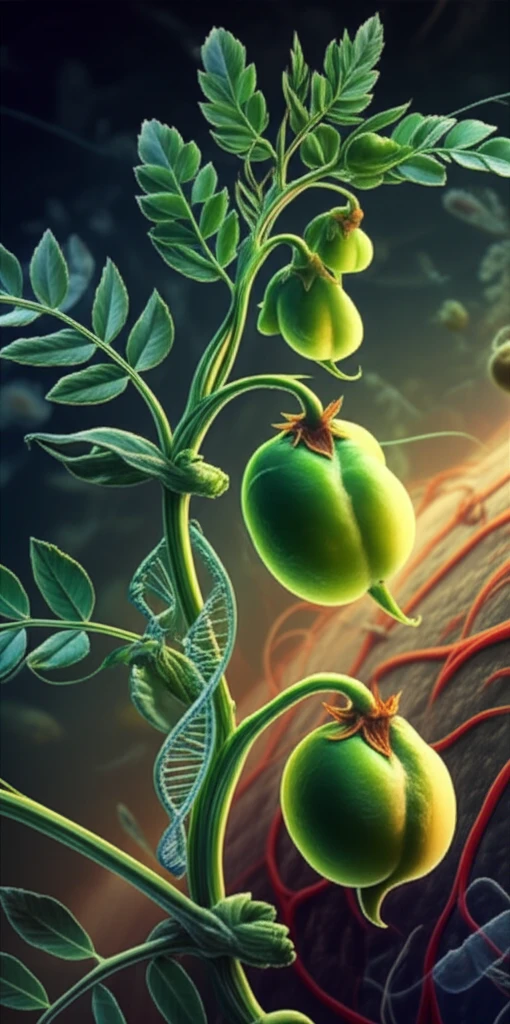
Decoding Chickpea's Defense: Unlocking Disease Resistance with Gene Analysis
"A new study identifies key genes in chickpea that could lead to more resilient crops and sustainable agriculture."
In a world increasingly concerned with food security, understanding how plants defend themselves against disease is more critical than ever. Disease resistance genes (R-genes) are the unsung heroes of the plant world, enabling crops to withstand attacks from viruses, bacteria, fungi, and pests. Think of them as a plant's immune system, constantly evolving to meet new threats.
Chickpea, a vital source of dietary nitrogen and a staple food for millions, faces significant yield losses due to fungal diseases like Ascochyta blight and Fusarium wilt. These diseases can decimate entire crops, threatening livelihoods and food supplies. That's why scientists are intensely focused on identifying and harnessing the power of R-genes in chickpea.
Now, a new study has cracked open the chickpea genome to identify and analyze a crucial class of R-genes known as NBS-LRR genes. This research provides a detailed blueprint for understanding chickpea's defense mechanisms and paves the way for breeding more disease-resistant varieties.
NBS-LRR Genes: Chickpea's Secret Weapon

NBS-LRR genes encode proteins that act as key components of a plant's defense system. These proteins contain two essential domains: a nucleotide-binding site (NBS) and leucine-rich repeats (LRR). The NBS domain binds and hydrolyzes ATP or GTP, providing the energy for the defense response, while the LRR regions are involved in protein-protein interactions, allowing the plant to recognize specific pathogens.
- Diversity in Defense: Chickpea possesses a diverse set of NBS-LRR genes, indicating a complex defense system capable of responding to a wide range of pathogens.
- Evolutionary Insights: Comparative genomics revealed the evolutionary relationships of chickpea NBS-LRR genes with those of other legumes, highlighting the conservation and divergence of these genes over time.
- Synteny Matters: Around 50% of NBS-LRR genes reside in macro-syntenic blocks, suggesting positional conservation and functional importance.
- Tissue-Specific Expression: Transcriptome sequencing data showed that NBS-LRR genes are expressed in a tissue-specific manner, with some genes showing higher expression in germinating seedlings and shoot apical meristems.
- Cis-Regulatory Elements: The promoter regions of NBS-LRR genes contain cis-regulatory elements like WBOX, DRE, CBF, and GCC boxes, which are known to be involved in stress response and pathogen defense.
Breeding a Better Chickpea: The Future of Disease Resistance
This research lays the groundwork for improving chickpea's disease resistance through targeted breeding strategies. By understanding which NBS-LRR genes are involved in defense against specific pathogens, breeders can select and crossbreed chickpea varieties with superior resistance traits.
Moreover, the identification of cis-regulatory elements opens up new avenues for manipulating NBS-LRR gene expression. By modifying these elements, scientists could potentially enhance the plant's defense response, making it more resilient to disease.
Ultimately, this knowledge will contribute to more sustainable agricultural practices, reducing the need for chemical pesticides and ensuring a stable food supply for a growing population. The future of chickpea cultivation lies in unlocking the full potential of its disease resistance genes.
